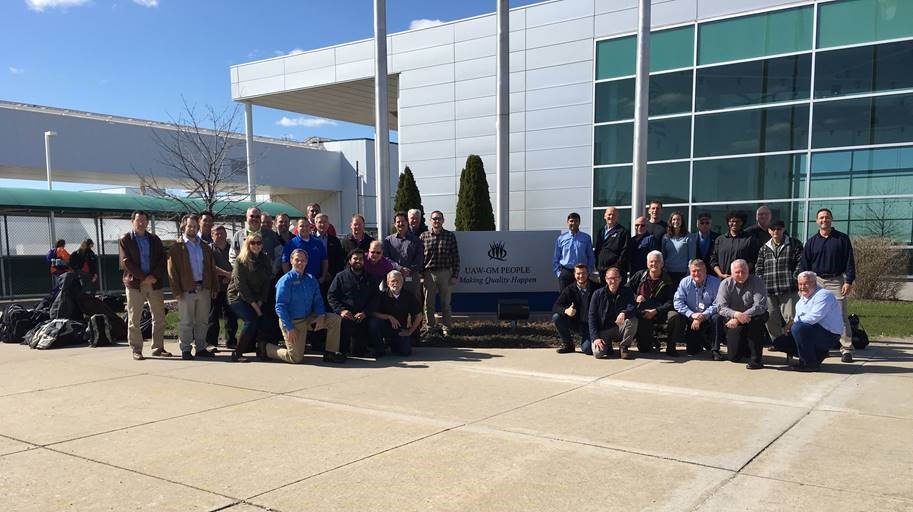Due to the challenges created by COVID-19 pandemic, manufacturers throughout the world have been trying to determine how to safely open and operate their manufacturing plants. To minimize the risk of infection, many manufacturers have reduced the number of people allowed into their plants without compromising the production continuity. This makes the delivery of INPLTs challenging in the traditional in-person fashion. To address this challenge and continue providing INPLTs during this difficult time, the Better Plants program piloted Virtual cohort In-Plant Trainings (VINPLTs) on process heating systems, ammonia industrial refrigeration systems and wastewater treatment operations. The VINPLT pilots have been very well received and participants have requested additional training on more topics.
The Better Plants program will deliver a VINPLT on industrial water systems from June 15 to Aug 3, 2021. The Water VINPLT will be conducted by industrial experts and Technical Account Managers using online video communication technologies. The Water VINPLT comprises eight (8) 2.5 -hour online training sessions (2-hours formal training and optional 0.5-hour Q&A) that will be delivered every Tuesday 10:00 AM – 12:30 PM ET for eight (8) consecutive weeks. Participating in this VINPLT is free and open to all the Better Plants program partners. This VINPLT event is limited to 25 participants from 6–8 companies or facilities.
Participants will be trained on water system fundamentals and undertake a facility-level water assessment, including hands-on training on the Plant Water Profiler (PWP) tool. To maximize the benefits from attending VINPLTs, homework assignments will be given to the participants at the end of each session and will be due by the next session. These homework assignments are designed to enhance participants’ understanding of industrial water systems, as well as to identify and quantify water savings opportunities. During the last session of the VINPLT, participants are expected to create a summary presentation based on the assessment of their facility, present findings, and share the scrubbed version with DOE.
At the completion of the VINPLT, Professional Development Hours (PDHs) Certificates will be prepared for the attendees upon request. Participants are expected to collect measurements/data from water using systems in their own facilities perform a water assessment and identify water efficiency opportunities with help from the instructors. To collect the assessment data, in some cases, diagnostic equipment will be arranged and shipped to the partner’s facility. The Better Plants diagnostic equipment is available on a first-come, first-serve basis.
June 15 to August 3, 2021; Every Tuesday 10:00 AM–12:30 PM ET (2-hour formal training + optional 0.5-hour Q&A)
Week 1 – Introduction to Industrial Water Assessment; June 15, 2021
The session will lay out the fundamentals of an industrial water assessment, water baselining and the true cost of water. Participants will learn to identify their facility’s water risk, chart out facility-level water flows, and be introduced to the Plant Water Profiler Tool (PWP).
Week 2 – Understanding System Level Water Use; June 22, 2021
This session will focus on system-level water use. Participants will be briefed on typical water using systems (industrial processes, cooling towers, boilers) and learn about the measurements needed to quantify its consumption. The software/hardware tools available through DOE to measure water consumption at a system level will be discussed.
Week 3 – True Cost of Water; June 29, 2021
Training experts will complete all remaining aspects of the water baselining activity and discuss the true cost of water in detail. Data collection challenges along with an overview of the measurements needed to determine the true cost of water through the PWP tool will be discussed.
Week 4 – PWP Tool: Working Session; July 6, 2021
Participants will work with the trainers to complete the water baseline and determine the true cost of water for their facility using the PWP tool. Nuances associated with the facility’s water flows will be discussed and the water imbalances will be ironed out for the facility.
Week 5 – Identifying Water Savings Opportunity; July 13, 2021
Training experts will discuss typical water savings opportunities in an industrial facility along with an in-depth look at the pumping, which plays an integral part in a facility’s water system. The checklists available through the PWP tool that helps users identify water savings opportunities will be reviewed. The water treasure hunt will be introduced.
Week 6 – Virtual Water Treasure Hunt; July 20, 2021
This session will equip the participants with the know-how to run a successful treasure hunt. Participants will perform a water treasure hunt of the facility with the help of on-site personnel and virtual guidance from the trainers.
Week 7 – Estimating Water Savings Opportunities; July 27, 2021
The water savings opportunities identified from the treasure hunt activity are discussed with the group. Participants will learn to quantify the savings associated with the identified opportunities using the appropriate calculators available through DOE.
Week 8 – Industrial Water Efficiency VINPLT Wrap-up Presentations; August 3, 2021
Over the past seven weeks, VINPLT attendees have been provided homework that focused on building their water assessment model in PWP and then quantify applicable water efficiency opportunities. Attendees will discuss the results from their virtual water system assessment and are encouraged to invite their upper management to attend the wrap-up session. Once completed, VINPLT attendees are given a Certification of Completion from US DOE.




 Kiran Thirumaran
Kiran Thirumaran